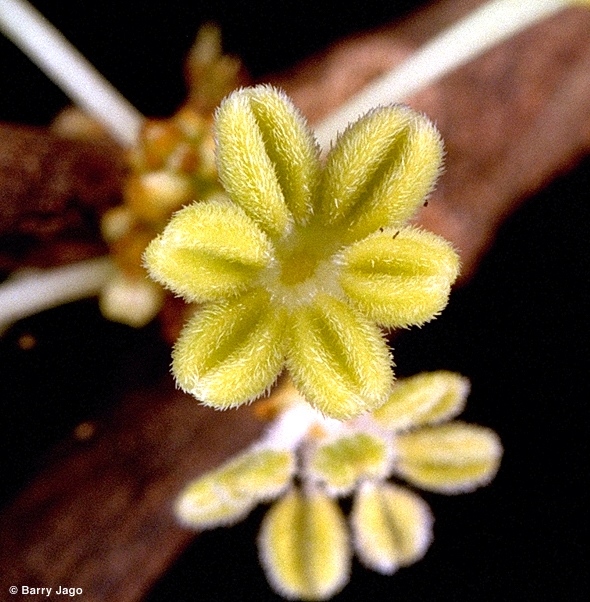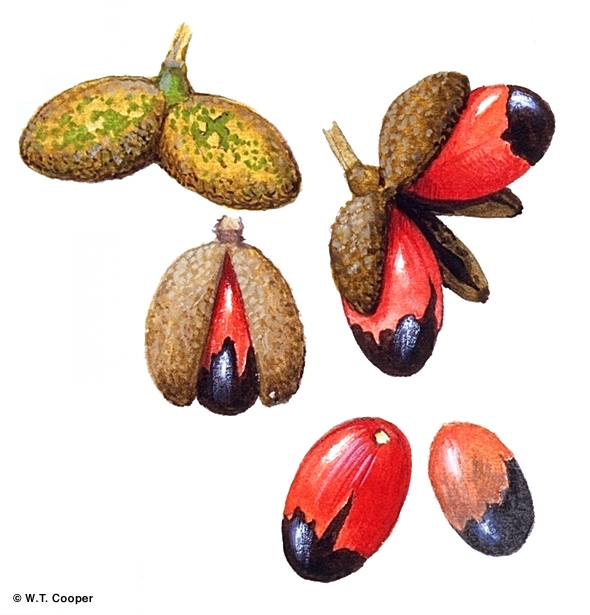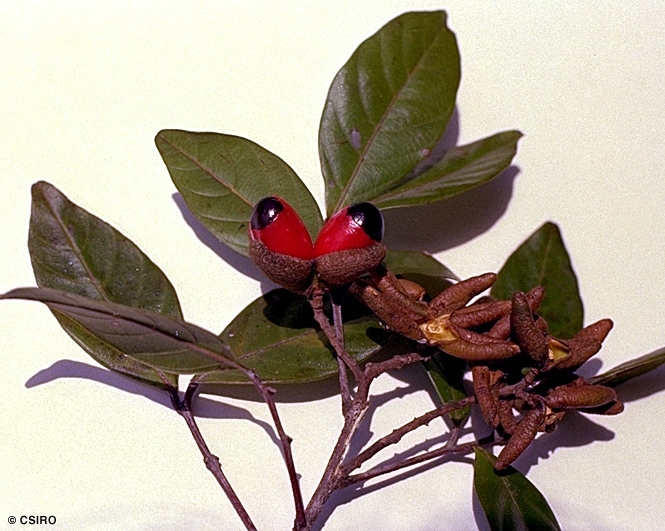Australian Tropical Rainforest Plants - Online edition
Arytera pauciflora S.T.Reynolds








Reynolds, S.T. () Flora of Australia 25: 198. Type: Johnstone R., Qld, March 1915, N. Michael s.n.; holo: BRI, iso: BRI.
Tamarind, Pink; Smaller Rose Tamarind; Pink Tamarind; Small-leaved Tamarind
Sapwood surface corrugated.
Domatia are foveoles with a small orifice. Leaflet blades about 5.5-17.5 x 2-5.5 cm, usually arched between the main lateral veins, margin often recurved. Midrib raised in a groove on the upper surface. Young leaf bearing twigs longitudinally grooved. Compound leaf rhachis with a median ridge and two lateral grooves. Compound leaf petiole with 1 or 2 grooves on the upper surface.
Fruits 1 or 2-lobed, about 10-35 mm diam., loculicidally dehiscent. Valve margins pubescent on the inner surface. Aril covering about two thirds of the seed.
First pair of leaves compound with two leaflets. At the tenth leaf stage: leaflet blades +/- elliptic, apex acuminate, base cuneate, domatia absent, midrib raised on the upper surface, leaflets sessile or very shortly stalked; compound leaf axis with a median ridge, compound leaf petiole +/- flat on the upper surface with a median ridge towards the apex. Seed germination time 35 to 37 days.
Endemic to NEQ, restricted to the area between Cooktown and Tully. Altitudinal range from near sea level to 1600 m. Grows as an understory tree in well developed rain forest on a variety of sites.
The red aril is eaten by Victoria's Riflebird. Cooper & Cooper (1994).





